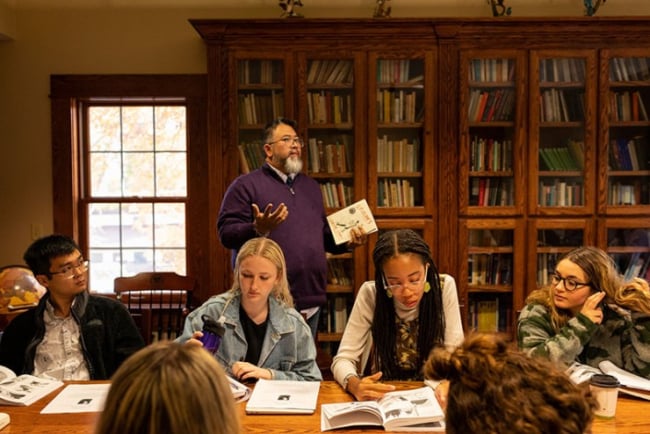You have /5 articles left.
Sign up for a free account or log in.

Kenyon College
What does it mean to study the liberal arts, either at a liberal arts college or within a larger university?
The Art & Science Group, which advises colleges on enrollment issues, thought now would be a good time to examine what high school seniors think of liberal arts colleges. And a study being released today concluded that students don’t really know.
For instance, more that 57 percent of a sample of 758 high school seniors in the spring said you can “get a liberal arts education anywhere.”
And 77 percent believe education that directly prepares students for a job is the best kind of education for them.
Letter to the Editor
A reader has submitted
a response to this article.
You can view the letter
here. Find all our Letters
to the Editor here.
What is a liberal arts college? According to a widely used definition by David Breneman, a researcher on higher education finance who also is the former president of Kalamazoo College, they are undergraduate institutions with either a majority or a very large minority of students majoring in traditional arts and sciences fields—and without substantial graduate programs. Breneman and others have used that definition to argue that arts and science colleges are disappearing.
The Art & Science group study had some better news for liberal arts colleges, and liberal arts programs within universities. “While respondents haven’t exhibited a particularly informed perspective on the liberal arts, across studies they have consistently identified a constellation of descriptors very dear to proponents of the liberal arts, most notably: class discussions, critical thinking, intellectual, problem solving, general knowledge, student/professor interaction, lifelong learning and broad education.” Characteristics least associated with the liberal arts include “politically conservative, partying, focusing on a particular subject, technical training, and big classes,” the report said.
While some of the qualities associated with the liberal arts would please advocates for liberal arts colleges, they aren’t exactly a definition. And they aren’t all accurate, even as descriptors. One could study engineering or business in a program with all the positive attributes. And there are conservative liberal arts colleges.
Students are not likely to have negative views of a liberal arts college, the report said, but nor are they embracing the liberal arts colleges.
“Laying claim to the liberal arts confers no competitive advantage with respect to the broad national prospective student market,” the report said. “This is true even for that part of the market we would expect to be most sympathetic to the liberal arts enterprise—those choosing to attend a baccalaureate college. That the liberal arts does not make for a compelling distinction, and, in fact, can still put an institution at a competitive disadvantage, creates a particular challenge for most baccalaureate colleges, whose identities are disproportionately tied to the liberal arts.”
What’s a College to Do?
In that environment, what is a liberal arts college to do? Or a liberal arts department within a larger university?
David Strauss, a principal at Art & Science, said it is first important to remember that colleges with prestige may not need to worry that much. Amherst and Swarthmore Colleges (and a dozen others) will do well on their “stature,” he said.
But most liberal arts colleges aren’t in that category.
Strauss does not oppose changing what a college’s mission is. “Evolution is an OK thing as long as you still serve your students,” he said.
But that evolution has be very clear. He said that talking about careers is “almost table stakes.”
Many colleges have added some non–liberal arts programs, such as data analytics or business, but he’s skeptical that that alone will work. Colleges need to talk about themselves in a way that goes beyond “small classes” and “professors who care,” no matter how proud they are of those qualities.
“It is the appeal of an institution that draws you in,” he said.








